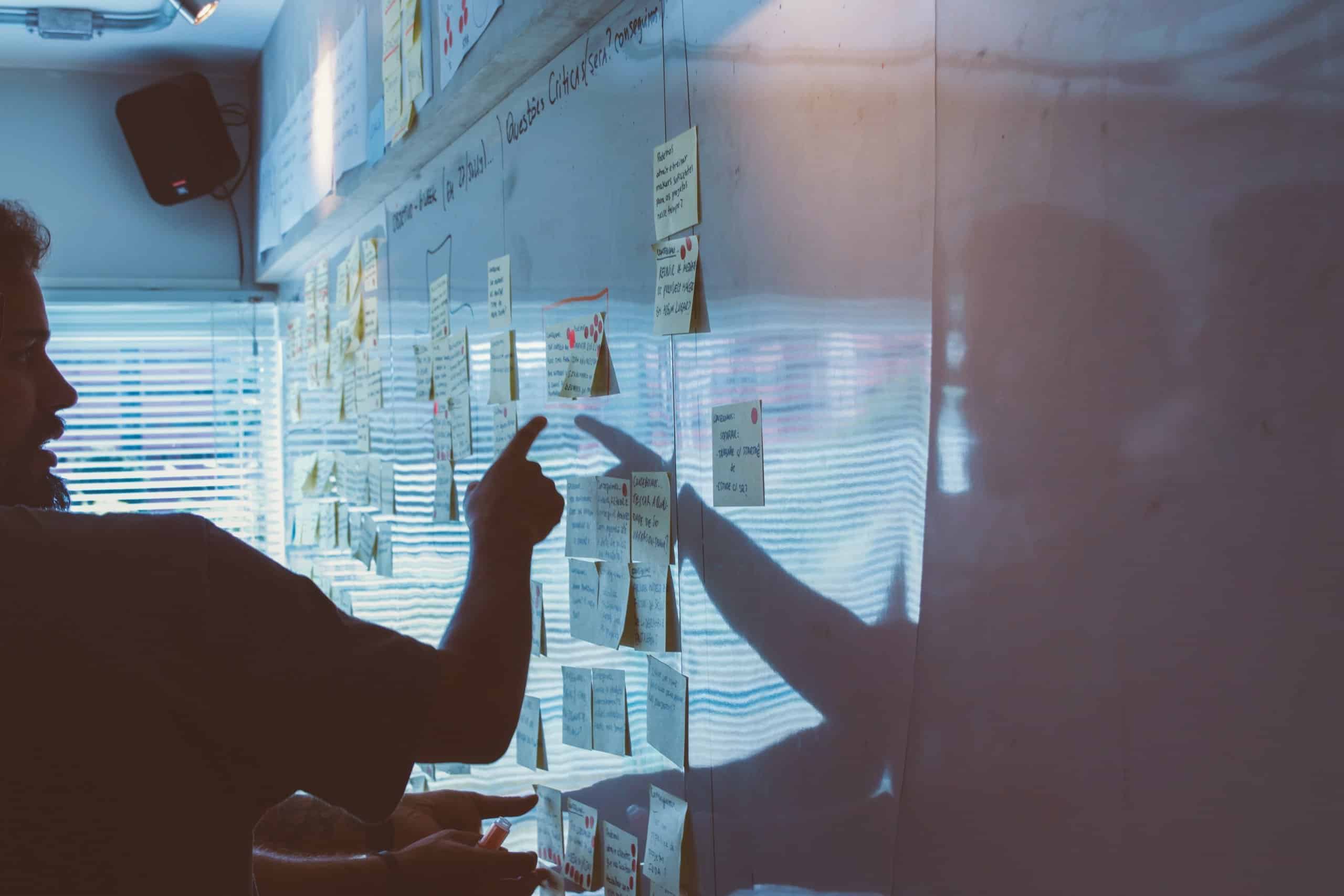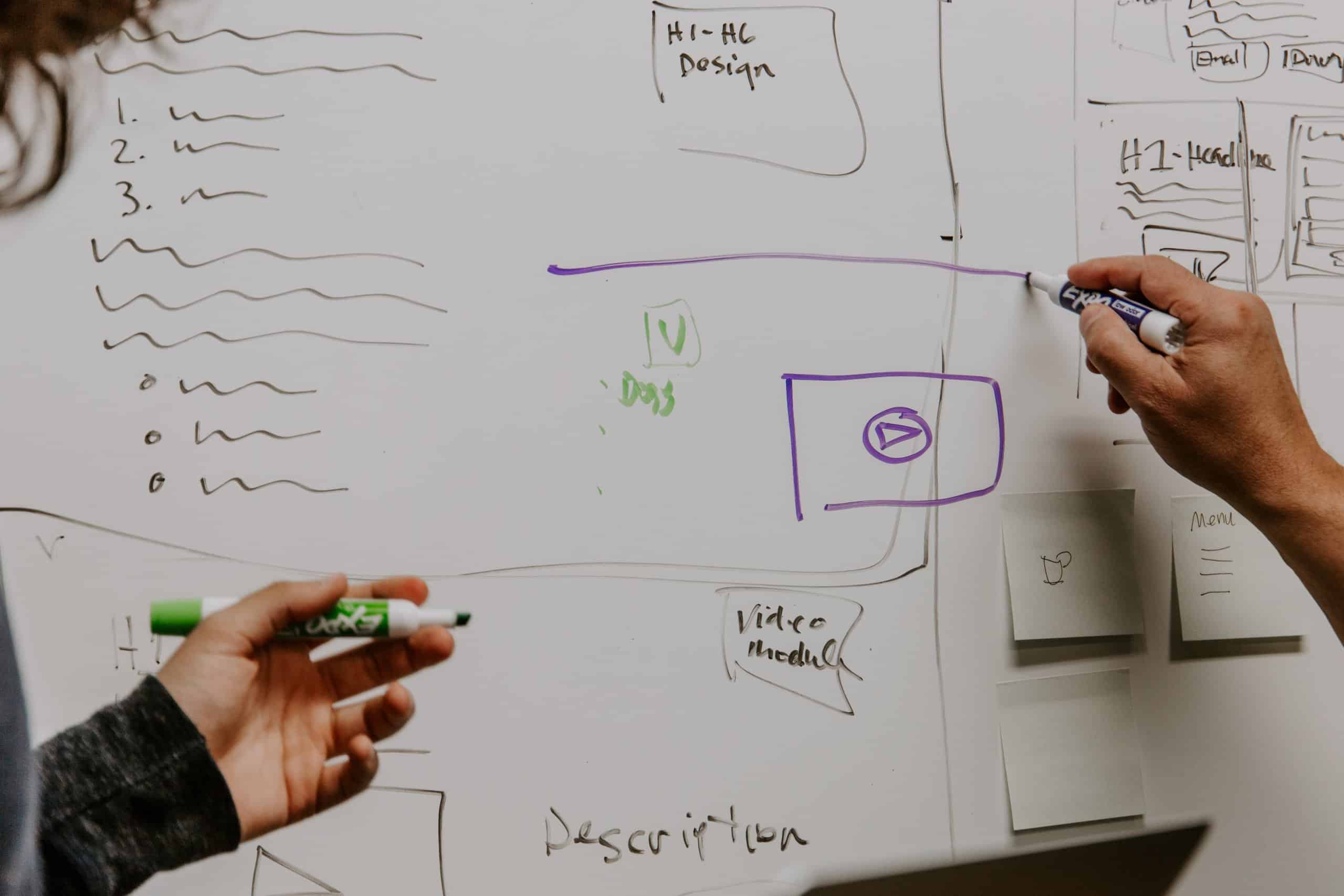The story of web design is nothing less than a fairytale where the damsel in distress ‘client’ wants their design to be created and saved by the ‘designer’ knight in the shining armor. The tale is as old as the internet itself, where the relationship between the client and the designer is still the hot potato that keeps revolving inside the web design sphere.
Can you make the logo a bit bigger?
Mind change the color scheme and the font to the one I gave you?
Add images of KITTENS.

Web designers can recall the moments they’ve heard the same or similar demands from their clients. Because of the difference in their perceptions, it seems like both of them belong to different planets. The designer is the expert and might suggest better ways to make the client’s site a success, but stress and pressure lingers everywhere, distorting the relationship he needs to build with the client.
On the other side, the client has to undergo frustration as well. He wants a website that looks the way he wants while making the impact and keeping the costs within his budget. Since the client lacks most of the technical knowledge in the background, the chances to skim down the misunderstanding last no more than a soap bubble.
Sometimes it’s the designer; other times, it’s the client. This Bermuda triangle of web design can lure any of the parties, which is why this article will discuss the disparity that lies in their relationship. From challenges designers face to the client psychology, we’ll let you explore the dimensions this triangle can create a dynamic relationship when done right.
Without further ado, let’s get into it.

It All Starts With The Challenges
For a successful project, the relationship between the designer and the client needs to be the perfect one. The designer needs to deal with the client.
Whether the designer works for a professional Dallas web design company or is an independent one, the hassles with the web design problem don’t seem to end, especially when the challenges are taking a toll on the designer’s life.
Challenge #1
At all times, the designer is expected just to read the client’s mind and print out a web page 100% as the client imagined. Even in an ideal setting, the designer needs details and instructions from the client to grasp their demand.
In a real-world setting, nothing baffles the designer more than vague explanations and extraordinary expectations from the clients. Even though both are pretty much misunderstood, the common grounds of understanding mismatches at the first meeting. If both don’t come to terms, this misunderstanding continues throughout.

Challenge #2
While the quality of the work isn’t an issue at the beginning, clients usually expect great designs on a small budget. The limited fiscal range might be somewhat unsettling for the client as well as the designer who charges over the budget. Even if your clients have a small budget, you shouldn’t be undermining them. They can become giants someday.
If there isn’t a middle ground for both, the designer gets underpaid, or the client feels like overspending, and no one’s happy.
Challenge #3
Sometimes, the clients want the designer to design a new site for them or refresh the old one. There could be a variety of reasons, such as updating the old design, improving the rank factor, or uploading new features on the website, and so on.
The trouble arises when the clients want you to design, but aren’t clear about the purpose behind this redesign.
Challenge #4
The time when a designer loses sleep comes closer when he receives unrealistic expectations with deadlines of the same sort. For instance, the client asks you to create five webpages from scratch within 24 hours. Web design isn’t an overnight process, and rushing it does nothing else except stressing the designer.
All of the trouble roots from the initial phase of the meeting. The client is destined to remain in the dark if the designer doesn’t explain the details of how he works and how long the five pages are going to take. Also, procrastination takes over the hassled project, and the quality is also affected.
Challenge #5
While they belong to two different dimensions, the clients usually prioritize what appears pleasant to them. The designer, on the contrary, has ample knowledge and realize the importance of the website in terms of its usability for the target audience. A word like user experience might sound alien to the clients, which is why they might be the ones insisting on implementing their idea of web design.
If the client is incognizant of the demands of effective websites, the designer is led to walk over the tight rope of following the client or using his experience to create a user-friendly website.

Understanding The Client Psychology
Understandably, the lion’s share in the creation of a website goes merely to the designer. Giving the client the complete control sounds terrifying, but to keep this relationship close to being better, the involvement of the client to some extent is necessary.
If you’ve noticed, all the challenges the designers face can be tracked down to the client psychology, which helps understand all the reasons why clients ditch the details at the start and make the designer tweak the design as per their choice at the end.
The clients aren’t the bad guys; it’s the misunderstanding and distortion in communication that obstructs the way for both of you to understand each other.
One thing that bothers them, even more, is when they are getting the design done. As soon as they sign the agreement, they are taking the responsibility of the design – whether it’s a success or a fail. It’s not every day that they’re going to get their designs developed from you or any other designer. They have to live with it for months or years, maybe. If they’re worrying, it’s because it would be something that becomes their identity shortly.
Given all the reasoning behind a client’s behavior and decisions, collaborating with them means better design. Here you get the upper hand as you let them take the wheel and keep educating them about the design process. As soon as they get familiar with it, their fear starts diminishing, and they no longer feel frustrated.
If the client has a hand in the design creation process, they will take full ownership of the design and won’t be refusing it. Moreover, they will showcase it as their design and will promote it. A little bit of collaboration from the designer can turn a critic into an advocate.

Why Should A Designer Collaborate?
When it comes to design, the ones creating it cares about embedding quality and earning profit with experience. When a designer works with a client, he’s able to accomplish most of his goals, including the ones mentioned above.
Since you’re designing a website, you can leave some blind spots that your clients may point out. There are also times when the client requests last-minute changes in the design. It happens when they aren’t involved in the process from the earliest stages. They’re just trying to help you out.
When the client keeps iterating, it can usually be because of two reasons. Either they had a vision from the start and failed to communicate it, or maybe they want to ‘overtake’ the ownership (because of the fear). As soon as you hand them the design, these issues resolve.
So, What Before The Web Design Seal Is Locked? The Designer’s Part
Coming across a good client is bliss, but dealing with them one-on-one is nothing less of a battlefield. You can kickstart the meeting with the clients and discuss the brief you prepared for them. The client understands and consents to your ideas, and you both sign the deal. That’s an ideal scenario for any designer, but let’s get real here.
It isn’t probably someone on your team, but you will communicate with the clients like they’re a part of your team. You don’t just get the details on the phone or the internet. The client will have to convey those in person.
In your first meeting, you need to make an impression on the client, but not in a way, he feels intimidated. Start with some casual chit chat, rounding off to the main goals and objectives of the clients. Let them tell you what they want and need. Listen to them.

After they’ve finished, word up your say in the following sequence.
1. Let Them Tell You What They Do
Even though they’ve given you a brief description of who they are and what they do, you should still let them describe their business in detail. With whatever information they provide you, it must be included in the design. It could be their mission, values, goals, milestones, and experience in their industry.
Clients might somewhat be a bit shy, so ask them to provide you an overview of the company as it will help you create a design brief as per the client’s own words.
2. Ask If The Client If They Have A Website
It depends if your client is starting from scratch or is already an established enterprise. If they have a website, it contains a bucket-load of information, revealing their preferences and providing insights into what your clients want to change about the design and its functionality.
3. Do They Have An Objective?
When clients are going for a design, it’s probably because they feel it looks outdated, isn’t performing well, or isn’t able to compete for the competitor’s website. They might be right. Take a step back and look at the bigger picture by asking the client what they want. Do they aim to reach more people, or do they want traffic? Or maybe they want to enhance their visibility or encourage better engagement.
You need to hit the pain points to figure out the objectives as clearly as possible.
4. Who’s The Target Audience?
While the client will be the design’s judge, the audience holds the authority to judge the design truly. It’s them who will experience the design’s usability and functionality. Ask the client about how well they know their audience and if their actual design has catered well to them.
Dig in deep and see what their target markets are, sort through their demographics and the purchasing habits, and so on. You may also question the client about what their audience has found interesting with their website and how it has worked for them.
5. What Features Does The Client Want For Their Site?
In the context of the client’s request and objectives, the design must include features that your client will want you to add. If they run a travel agency, they may want you to update the list of packages or a booking form or even a blog. Other areas of functionality include website chat, online photo galleries, video plugins, social media buttons, and responsive versions for both mobile and desktop.
These features help your client narrow the goals and see the site’s improved version becoming a new possibility.

6. Challenges Faced Right Now
It’s hard to pin the challenges. As discussed before, the client might give you vague versions of the challenges they’re facing. Ask them how they feel about the current design and notice their responses. Ask them to pick out their most and least favorite sites and point out what they like and don’t like about them. Let them tell you where they’re stuck and what doesn’t resonate with them.
This way, you can minimize the challenges that occur in the future design process and streamline your design relationship with the client.
7. Discover How The Client’s Business Is Different From Competitors’
Clients always have competitors, and they keep watching for how they’re doing. Just because there’s one competition doesn’t mean the client can’t distinguish himself from the rest. Ask your clients what their specialty is. Their products and services can be similar to those of the competitor, but differentiation is about making everyday practices special.
It could be something as simple as freebies or helpful customer service or even a creative social media strategy. Discover more about your client’s forte and allow them to recognize it.
8. The Scope Of The Project
When it’s all said and done, the client needs to be assured of what the designer has gathered from the information provided. Keeping all the responsibilities and processes in view, you must highlight the main ideas and sum it up by asking the deadline for the initial draft and their budget.

9. Client Expectations And The Reality
As a designer, you need your flexibility and approach to start the design with a clear mind. Given the detail of the interview, client expectations might fly high. Thoroughly and precisely, walk them through your understanding of their demand. Don’t forget to add in the budget because it’s the essential part, settling, which will initiate the process.
Give the client a hang of reality and help them understand your pace of working. It’s better to come to terms with the client – concerning your flexibility and their budget.
On Client: Know Your Designer Like He Should Be Known
Now, we’ve come to the client’s part. The hassles to voice out your idea of design is real. Several things are fazing in the process. You need to build a relationship with the designer.
Most of the time, the designer community views clients as a threat to a perfect design. If there’s distortion in communication, you might feel left out of the design process, but the designer is a pro; let him run his expert mind. If you’re a client, it’s not your fault that miscommunication occurs.
It happens almost in every relationship, but blaming each other doesn’t help. Instead of just connecting superficially, let’s look at how you can become an ideal client for every designer you come across.
1. Learn To Trust Your Designer
You’re having your design created for the first time or maybe after months or years. The trends in the industry have changed, and adapting to the changing paradigm is a must. The designer you chose must have a smooth-running experience. He’s a professional with practices built around a robust and structured knowledge. Whatever he’s suggesting might be better for you.
They want you to understand the process, and you must put your trust in them. Listen to them carefully and ask questions at whatever part bothers you.
2. Communicate Properly
The designers are only confused when the answers they receive are strutted responses from a baffled client. Be concise and precise about your ideas because the designer is paying attention to your words. If you’re lost at what to say and what not to say, the design will suffer the most.
Prepare yourself for questions the designer may ask. If you’re knowledgeable of the work process, then building a bridge of understanding is no hard task. Start with your goals and objectives, target audience, brand guidelines, and overall personality you’d like to convey. The designer will gradually grasp your ideas and bring concepts to work.

3. Create Content For Your Design
The content on your website is what you create, not what the designer creates. His job is to make sure your content appears in the best possible way. However, the content is solely your responsibility. You can’t just provide him with the sample content and expect him to manage the whole thing. While the designer will create the design, he won’t have much time and information to work with it.
To make things clear to him, you can provide content and reference material, so the designer gets your idea of how you want your design. Using your instructions, they will develop a design within the context of your preference. Designers usually prefer if you give them a ‘mood board’ that includes your taste for color, fonts, style, and images. It helps them understand precisely what you and your audience needs.
4. Offer Feedback When The Designer Asks
Sure, as a client, it’s your born right to deliver feedback and an overview of the design. But sometimes, checking up on the design and the designer too much can irritate the designer and create obstacles in his work.
The best practice for a good client is to stick to the reports and updates your designer is providing. Let the designer give you updates and return the favor with feedback for design improvement throughout the process. If you try to indulge forcefully, the procedure of design creation gets disrupted.
What you can do instead is that you can create a list of feedback that you want to convey to the designer. It’s better to be on the same page where you can set up weekly or monthly meetings with the designer and discuss the goals and progress. Without overpowering one another, both of you can help each other create a design for the best of the project.

5. Patience Because It Helps Make Great Designs
The whole point of your relationship with your designer revolves around understanding each other. It’s one of the biggest challenges both parties struggle with, but here’s the main idea: both should focus on the problem and rise over it to take a better look at it. Their combined strategy can help bring solutions at the right time and in the right place.
There might be times when the designer creates a design that you might not resonate with. Maybe they’re not communicating the brand values right, or they may not be focusing on the right audience. At these times, you need to be as understandable as possible. Why? Because if you’re composed instead of criticizing the design, the designer will appreciate your tolerance level with his mistakes. A little patience with some kindness goes a long way, and you’ll know that soon.
6. Keep A Positive Attitude
Sitting with the designer and discussing the intricacies is an exciting experience. No matter at what point you’re in your design scenario, you may come across a point of difficulty with the designer. Maybe it’s you. Perhaps it’s the designer. Maybe it’s both or not. No matter what the case, your positive attitude needs to rise above the situation and solve the issue directly.
Disagreement can result in many cases, but it’s better if you deal with the designer in a friendly manner. The discussion can lead to an interesting turn, consequently, towards how you both can contribute to making the design better.
7. Accept That Good Design Doesn’t Come Cheap
When it comes to prices, both the designer and the client have different perceptions.
For the former, his time, skills, and expertise demand to be compensated at compatible rates. The latter, on the other hand, wants to have an excellent design with a smaller price tag.
As the client, you need to be mindful of the efforts the designer is putting into your design. He’s a human, not a robot; remember that. You’re giving him a raw concept, which he’s turning into a full product. You’ve got to pay for that.
If you don’t think that good design is expensive, you can check the market. The ones that offer the least rates will probably be the amateurs in the industry. Experienced designers know their way around a website and all of its related aspects, such as optimization, quality, and responsiveness. Always choose a designer that can create a design for you within your budget. Don’t drag the costs too low because you know what’ll happen next.
The Web Design Circuit Works When The Relationship Works
Designers working with clients or the other way round leads both to an unknown path, which is filled with risks of losing the relationship to some mistakes or communication gap on one side or the other. Everything can be sought when both sit down to discuss the practicality of the process in a manner feasible to both.
Working together is not about who’s wrong or right; it’s about making sure you both secure the relationship with commitment, respect, and effective communication. As you both work collaboratively, you will realize that unrealistic expectations don’t stand a chance, and you both have to face the challenges and focus towards creating a better experience.
